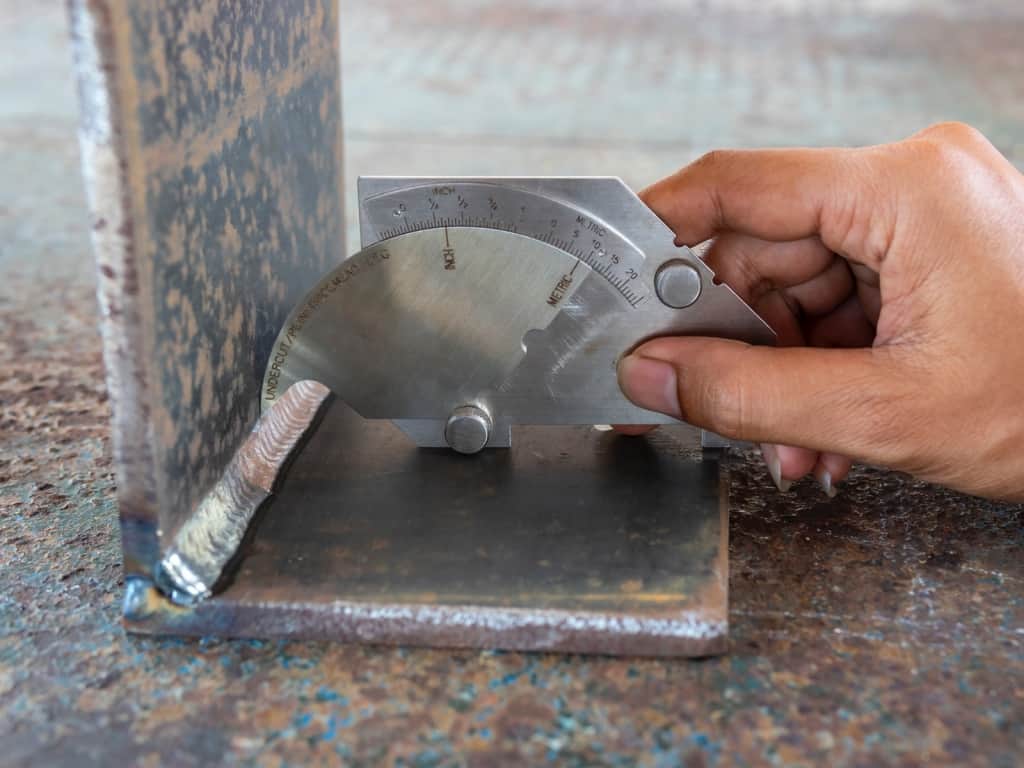Complete Guide to Preventing Weld Undercut: Tips and Techniques
Complete Guide to Preventing Weld Undercut: Tips and Techniques
Blog Article
Mastering the Art of Welding: Just How to Stay Clear Of Undercut Welding Issues for Flawless Manufacture Outcomes
By recognizing the root causes of undercut welding and carrying out efficient strategies to avoid it, welders can boost their craft to new levels of excellence. In the pursuit of flawless construction outcomes, understanding the art of welding to stay clear of undercut concerns is not simply a skill yet a need for those aiming for excellence in their job.
Recognizing Undercut Welding

To avoid undercut welding, welders must guarantee proper welding specifications, such as adjusting the present, voltage, traveling rate, and keeping the appropriate electrode angle. In addition, using the proper welding technique for the particular joint configuration is crucial. Employing weaving movements or backstepping strategies can help make sure proper weld metal deposition and lower the likelihood of undercut formation. Normal inspection of welds during and after the welding procedure is additionally important to capture any kind of undercut very early and make required changes to stop additional flaws. Preventing weld undercut. By recognizing the sources of undercut welding and executing safety nets, welders can achieve top notch, structurally audio welds.
Root Causes Of Undercut in Welding
Comprehending the aspects that add to damage in welding is essential for welders to produce high-quality, structurally audio welds. When the weld steel does not effectively load the groove developed between the base metal and the previously transferred weld steel, undercutting occurs. Several elements can lead to damage in welding. One typical cause is excessive warmth input. Welding at high temperatures for prolonged durations can lead to the base metal melting greater than desired, leading to damage. Poor welding incorrect or existing welding speed can likewise contribute to damage. Not enough current may not provide adequate warm to melt the base and filler steels adequately, while too much speed can prevent appropriate fusion, causing undercut. In addition, improper electrode angles or wrong torch adjustment methods can create locations of low weld steel deposition, promoting undercut. Recognizing these causes and implementing appropriate welding techniques can assist prevent damaging issues, ensuring resilient and solid welds.
Techniques to stop Undercutting

To mitigate the danger of undercutting in welding, welders can utilize critical welding methods aimed at boosting the top quality and integrity of the weld joints. In addition, utilizing the correct welding method for the specific joint configuration, such as weave or stringer beads, can contribute to minimizing damaging.
In addition, correct joint preparation, including ensuring clean base materials totally free of contaminants and utilizing the ideal welding consumables, is crucial in stopping undercut defects. Employing back-step welding techniques and managing the weld bead profile can likewise assist disperse warm equally and minimize the danger of undercut. Routine examination of the weld joint throughout and after welding, in addition to applying quality control procedures, can assist in identifying and attending to undercutting problems promptly. By carrying out these techniques carefully, welders can accomplish flawless fabrication results with very little undercut defects.
Significance of Correct Welding Specifications
Choosing and maintaining suitable welding criteria is necessary for accomplishing successful welds with marginal flaws. Welding specifications describe variables such as voltage, existing, travel speed, electrode angle, and shielding gas flow rate that directly influence the welding process. These specifications should be meticulously readjusted based upon the type of product being bonded, its thickness, and the welding method used.
Correct welding specifications guarantee the correct amount of warm is related to melt the base metals and filler product evenly. If the criteria are established too expensive, it can lead web to extreme heat input, triggering spatter, distortion, or burn-through. On the other hand, if the parameters are also reduced, insufficient combination, browse around these guys absence of penetration, or undercutting may take place.
Quality Control in Welding Operations

Final Thought
In final thought, mastering the art of welding calls for a detailed understanding of undercut welding, its causes, and strategies to avoid it. By making sure proper welding criteria and carrying out quality control practices, remarkable construction results can be attained. It is vital for welders to consistently pursue excellence in their welding procedures to avoid undercut problems and produce high-grade welds.
Undercut welding, a typical flaw in welding processes, occurs when the weld steel doesn't correctly load the groove and leaves a groove or anxiety along the welded joint.To stop undercut welding, welders should make certain proper welding criteria, dig this such as adjusting the current, voltage, traveling speed, and preserving the correct electrode angle. Inadequate welding inaccurate or existing welding speed can additionally contribute to undercut.To reduce the risk of undercutting in welding, welders can utilize strategic welding methods intended at boosting the quality and honesty of the weld joints.In conclusion, grasping the art of welding calls for an extensive understanding of undercut welding, its reasons, and techniques to prevent it.
Report this page